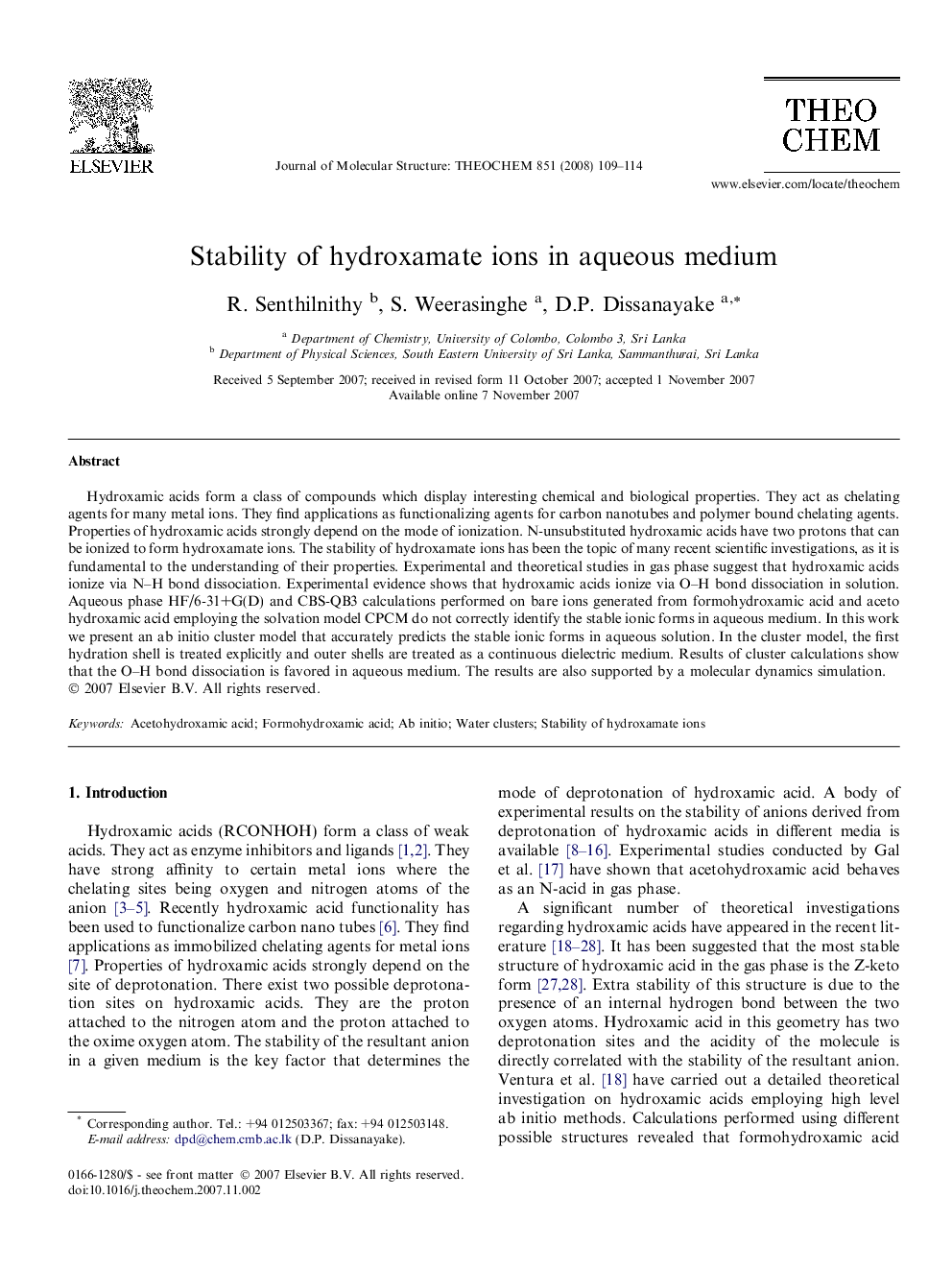| Article ID | Journal | Published Year | Pages | File Type |
|---|---|---|---|---|
| 5418497 | Journal of Molecular Structure: THEOCHEM | 2008 | 6 Pages |
Abstract
Hydroxamic acids form a class of compounds which display interesting chemical and biological properties. They act as chelating agents for many metal ions. They find applications as functionalizing agents for carbon nanotubes and polymer bound chelating agents. Properties of hydroxamic acids strongly depend on the mode of ionization. N-unsubstituted hydroxamic acids have two protons that can be ionized to form hydroxamate ions. The stability of hydroxamate ions has been the topic of many recent scientific investigations, as it is fundamental to the understanding of their properties. Experimental and theoretical studies in gas phase suggest that hydroxamic acids ionize via N-H bond dissociation. Experimental evidence shows that hydroxamic acids ionize via O-H bond dissociation in solution. Aqueous phase HF/6-31+G(D) and CBS-QB3 calculations performed on bare ions generated from formohydroxamic acid and aceto hydroxamic acid employing the solvation model CPCM do not correctly identify the stable ionic forms in aqueous medium. In this work we present an ab initio cluster model that accurately predicts the stable ionic forms in aqueous solution. In the cluster model, the first hydration shell is treated explicitly and outer shells are treated as a continuous dielectric medium. Results of cluster calculations show that the O-H bond dissociation is favored in aqueous medium. The results are also supported by a molecular dynamics simulation.
Related Topics
Physical Sciences and Engineering
Chemistry
Physical and Theoretical Chemistry
Authors
R. Senthilnithy, S. Weerasinghe, D.P. Dissanayake,
